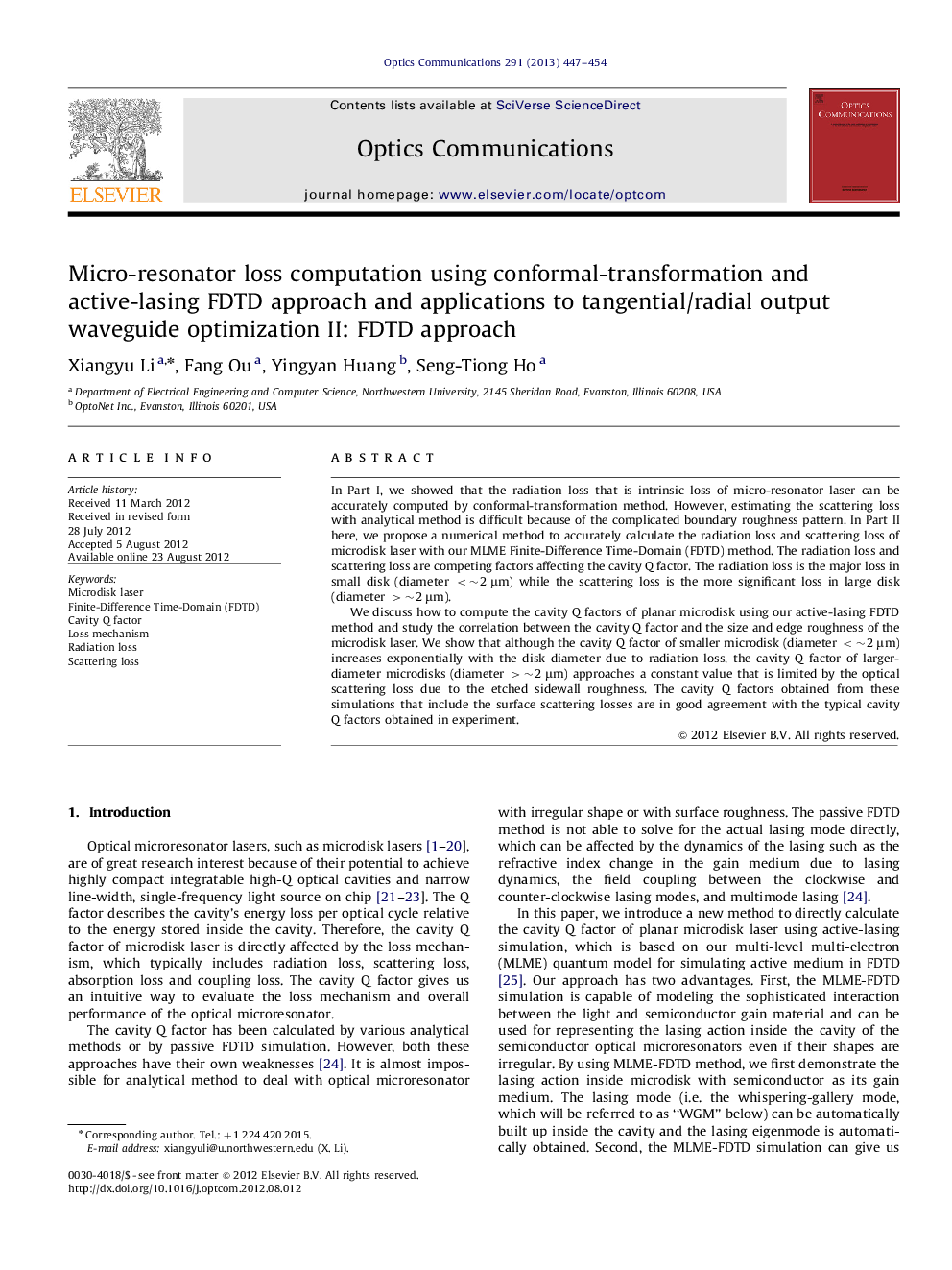| Article ID | Journal | Published Year | Pages | File Type |
|---|---|---|---|---|
| 1535738 | Optics Communications | 2013 | 8 Pages |
In Part I, we showed that the radiation loss that is intrinsic loss of micro-resonator laser can be accurately computed by conformal-transformation method. However, estimating the scattering loss with analytical method is difficult because of the complicated boundary roughness pattern. In Part II here, we propose a numerical method to accurately calculate the radiation loss and scattering loss of microdisk laser with our MLME Finite-Difference Time-Domain (FDTD) method. The radiation loss and scattering loss are competing factors affecting the cavity Q factor. The radiation loss is the major loss in small disk (diameter <∼2 μm) while the scattering loss is the more significant loss in large disk (diameter >∼2 μm).We discuss how to compute the cavity Q factors of planar microdisk using our active-lasing FDTD method and study the correlation between the cavity Q factor and the size and edge roughness of the microdisk laser. We show that although the cavity Q factor of smaller microdisk (diameter <∼2 μm) increases exponentially with the disk diameter due to radiation loss, the cavity Q factor of larger-diameter microdisks (diameter >∼2 μm) approaches a constant value that is limited by the optical scattering loss due to the etched sidewall roughness. The cavity Q factors obtained from these simulations that include the surface scattering losses are in good agreement with the typical cavity Q factors obtained in experiment.
